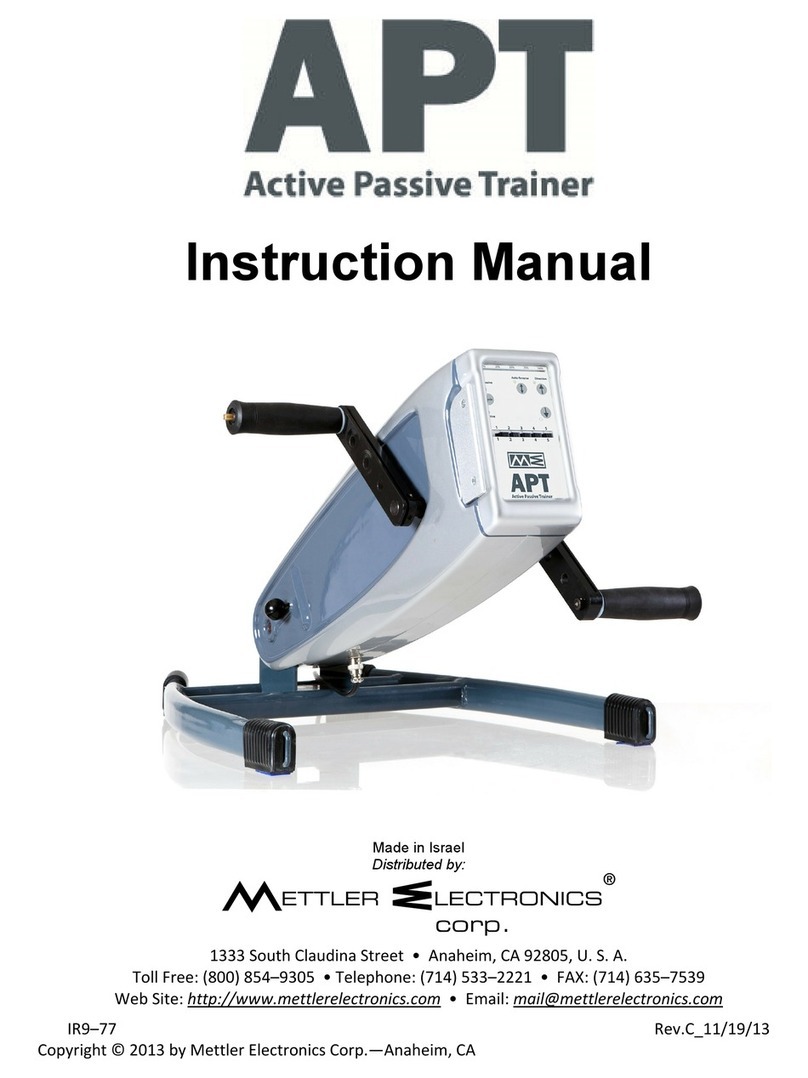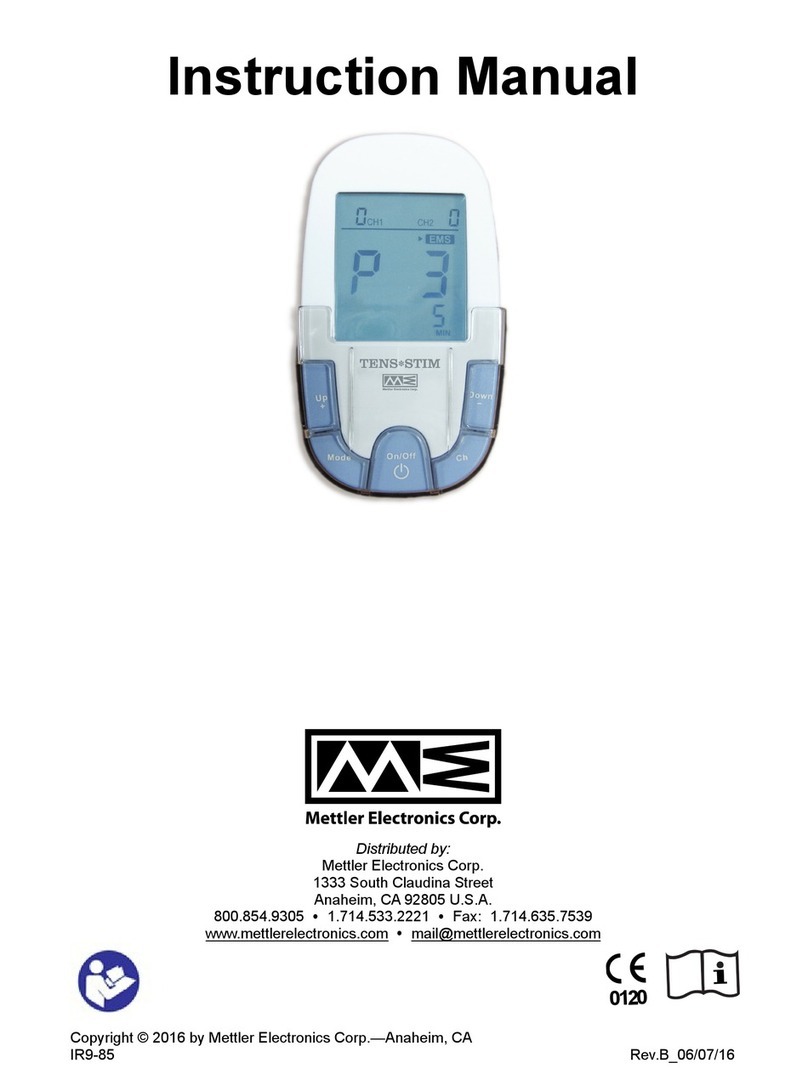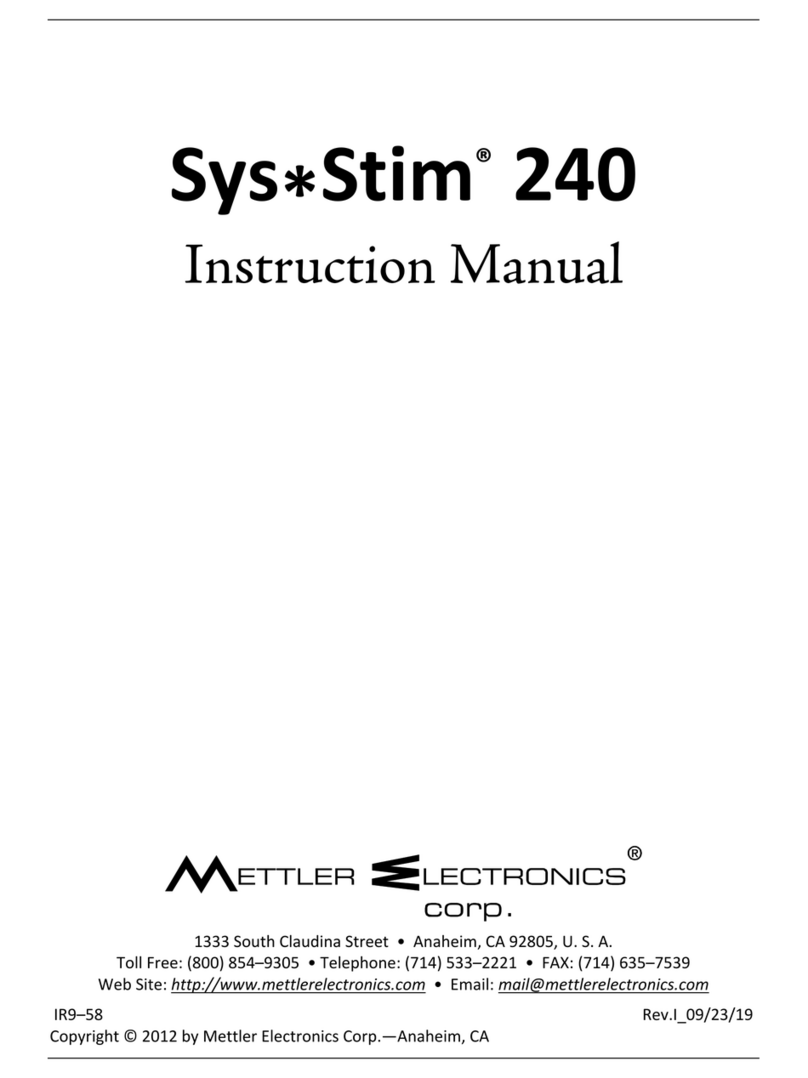
Mettler Electronics Corp.— Rev. E_4/4/13
10
000
The three-digit output display shows the peak output
voltage for narrow, wide, and AC pulse modes, or the
electrical current (Milliamps) for the DC continuous mode
while treatment output is active. The meter function is
dependent upon the current mode selected prior to the
start of operation. Two green indicators, one for peak volts
and one for Milliamps specify what is being displayed by
the meter. When treatment output is inactive (Hold mode)
and when Surge is selected, the meter will display the
currently selected surge pulse frequency. (F35, for 35Hz,
or F83 for 83 Hz).
Press the “Narrow Pulse” button to enter the Narrow Pulse
mode. The green indicator to its left illuminates when
activated to show that the Narrow pulse is selected.
Selection of this current type provides electrical pulses
with current flow for 100 μs of one polarity followed by ¼
amplitude for 400 μs of reversed polarity. This results in a
net DC current flow of zero. The intensity is set by the
Intensity control. Frequency is set by the pulse frequency
control when not in Surge mode.
Press the “Wide Pulse” button to enter the Wide Pulse
mode. The green indicator to its left illuminates when
activated to show that the Wide pulse is selected. Its
shape is the same as the Narrow pulse shape except that
the pulse duration is 300 μs of one polarity followed by ¼
amplitude for 1200 μs of reversed polarity.
Press the “AC Pulse” button to enter the AC Pulse mode.
The green indicator to its left illuminates when activated to
show that the AC pulse is selected. Selection of this
current type provides electrical pulses that automatically
change current direction to achieve a net current flow of
zero. Each current cycle is 300 μs of one polarity followed
by 300 μs of the same amplitude of reversed polarity. The
intensity is set by the Intensity control. Frequency is set by
the Pulse frequency control when not in Surge mode.
Press the “DC Continuous” button to enter the DC
Continuous mode. The green indicator to its left
illuminates when activated to show that DC Continuous is
selected. Selection of this current type provides an output
current in one direction with the intensity set by the
Intensity Control up to a maximum of 30 milliamps (ma).
The frequency control is inoperative in this mode. Caution:
applications of galvanic (DC) current can produce skin
irritation. Please review contraindications.































